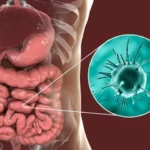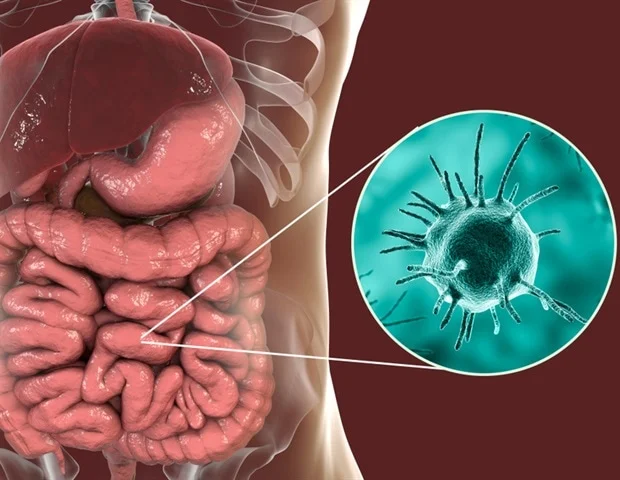Introduction
In the dynamic world of biotechnology, innovation is the key to improving efficiency, maintaining high product quality, and ensuring patient safety. One of the most transformative advancements in recent years is the rise of single-use bioprocessing probes and sensors. These disposable devices are revolutionizing the way biopharmaceutical products are developed and manufactured, bringing flexibility, cost-efficiency, and speed to the production process.
Definition
Single-Use Bioprocessing Probes and Sensors are disposable, pre-sterilized devices designed to monitor and measure critical parameters such as pH, dissolved oxygen, temperature, and conductivity in biopharmaceutical manufacturing processes. They offer a contamination-free, cost-effective solution by eliminating the need for cleaning and sterilization between batches, thus improving process efficiency and ensuring product quality in single-use bioreactor systems.
Understanding Single-Use Bioprocessing Technology
Single-use technology (SUT) refers to equipment designed to be used once and then discarded. In bioprocessing, this often means components like bioreactors, bags, tubing, connectors, and now, probes and sensors used for monitoring and control. These systems are typically made of polymeric materials and come pre-sterilized, ready for immediate use. The traditional approach in bioprocessing involved stainless steel equipment that required extensive cleaning, validation, and sterilization between production cycles. This model, while reliable, is resource-intensive and lacks the flexibility that modern manufacturing demands.
With the integration of single-use sensors and probes, facilities can now monitor critical parameters such as pH, dissolved oxygen (DO), temperature, conductivity, and pressure in real-time – all within a sterile, disposable environment.
Benefits of Single-Use Probes and Sensors
Reduced Contamination Risk:
One of the primary benefits of single-use technology is its ability to minimize contamination. Since each component is used only once and is disposed of afterward, the risk of cross-contamination is drastically reduced. This is especially crucial in multiproduct facilities and in processes involving sensitive biological materials.
Faster Turnaround Time:
Cleaning, sterilizing, and validating traditional equipment between batches is time-consuming. These processes are removed by single-use systems, allowing for quicker batch changes and higher throughput overall. This is especially beneficial for facilities that produce personalized medicines or operate in fast-paced R&D environments.
Improved Flexibility and Scalability:
Single-use sensors are ideal for small-scale and pilot operations, as well as full-scale commercial production. Their modular nature allows for quick adaptation to new processes, which is vital for companies working on a diverse pipeline of biologics, cell therapies, and vaccines.
Cost-Efficiency:
Although the upfront cost of single-use sensors may seem high, the savings on cleaning, maintenance, labor, and reduced downtime lead to significant cost reductions over time. Additionally, the need for fewer utilities (e.g., steam, clean-in-place systems) lowers operational expenses.
Enhanced Data Accuracy and Process Control:
Modern single-use sensors offer real-time, high-accuracy data, and are often integrated with automation systems. Many come factory-calibrated, reducing human error and ensuring reliable performance across batches.
Key Applications in Biopharma
Several phases of the development and production of biopharmaceuticals involve the use of single-use probes and sensors:
- Cell Culture and Fermentation: Monitoring of DO, pH, and temperature in single-use bioreactors to ensure optimal cell growth.
- Downstream Processing: Conductivity and pressure sensors help in chromatography and filtration processes.
- Final Fill and Finish: Ensures sterility and compliance in the final packaging phase.
Types of Single-Use Sensors in Bioprocessing
1. pH Sensors
These sensors measure the acidity or alkalinity of a solution, a critical factor in cell growth and protein stability. Single-use pH sensors are factory-calibrated and stable for extended storage periods.
2. Dissolved Oxygen (DO) Sensors
Oxygen availability is crucial for aerobic cell cultures. Single-use DO sensors enable continuous monitoring without the need for cleaning or recalibration.
3. Temperature Sensors
Integrated into single-use bioreactor bags, these sensors help maintain the precise thermal conditions needed for bioprocesses.
4. Conductivity Sensors
Used to monitor salt concentration and buffer conditions during purification and diafiltration steps.
5. Pressure Sensors
Important for maintaining safe and optimal operating conditions in closed systems.
Challenges and Considerations
While the benefits are significant, the transition to single-use technology is not without challenges:
Sensor Performance and Shelf Life:
Single-use sensors must maintain stability during storage and transportation. Manufacturers continue to improve sensor designs to ensure long-term reliability.
Standardization:
With multiple vendors offering various designs, standardization across platforms can be a concern. Industry groups are working toward developing universal standards.
Environmental Impact:
Plastic waste is a concern since disposable materials are used more frequently. However, life cycle assessments often show that reduced cleaning and sterilization can offset some environmental costs.
Data Integration:
Ensuring that single-use sensors seamlessly integrate with digital monitoring and control systems (e.g., SCADA, MES) is essential for smart manufacturing.
Future Trends
The future of single-use bioprocessing sensors is closely tied to broader industry trends in digitalization, continuous manufacturing, and personalized medicine.
- Smart Sensors and IoT: Future single-use sensors may include wireless connectivity, allowing for remote monitoring and predictive analytics.
- Machine Learning Integration: Data from sensors can feed into AI algorithms for real-time optimization and anomaly detection.
- Sustainability Focus: Manufacturers are developing recyclable or biodegradable single-use components to address environmental concerns.
Industry Adoption
Major biopharmaceutical companies and CDMOs (Contract Development and Manufacturing Organizations) are rapidly adopting single-use systems, particularly for new product launches and flexible manufacturing facilities. Regulatory agencies, including the FDA and EMA, support their use provided quality and sterility standards are met.
Vendors such as Sartorius, Thermo Fisher Scientific, Cytiva (formerly GE Healthcare Life Sciences), and Parker Hannifin are leading the market with innovative sensor solutions tailored for single-use environments.
Single-Use Bioprocessing Probes and Sensors Market Expansion Rate
According to Data Bridge Market Research, at a compound annual growth rate (CAGR) of 13.2%, the single-use bioprocessing probes and sensors market is projected to grow from its 2024 valuation of USD 3.54 billion to USD 9.55 billion by 2032.
Learn More: https://www.databridgemarketresearch.com/reports/global-single-use-bioprocessing-probes-and-sensors-market
Conclusion
The integration of single-use bioprocessing probes and sensors represents a modern revolution in biotechnology. By addressing long-standing challenges related to contamination, downtime, cost, and scalability, these technologies are streamlining the path from development to market.














Leave a comment